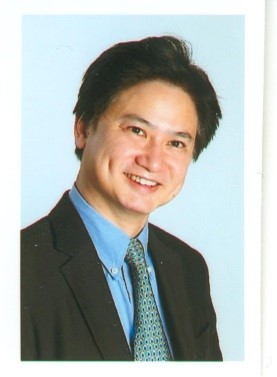ISSMGE Official Lecture
Professor Charles W.W. Ng;
(2017-2021) President of the International Society for Soil Mechanics and Geotechnical Engineering

Professor Charles W.W. Ng is currently the CLP Holdings Professor of Sustainability, Chair Professor in the Department of Civil and Environmental Engineering and Associate Vice-President for Research and Graduate Studies at the Hong Kong University of Science and Technology (HKUST). He is the President of International Society for Soil Mechanics and Geotechnical Engineering (ISSMGE).
He grew up in Hong Kong and went to the UK to earn his MSc and PhD degrees from the University of Southampton and the University of Bristol in 1987 and 1993, respectively. After carrying out a period of post-doctoral research at the University of Cambridge between 1993 and 1995, he returned to Hong Kong and joined HKUST as Assistant Professor in 1995 and rose through the ranks to become Chair Professor in 2011. Professor Ng has supervised 46 PhD and 41 MPhil students to graduation and mentored dozens of postdoctoral fellows and visiting scholars.
Professor Ng was elected an Overseas Fellow from Churchill College, Cambridge University, in 2005 and was elected Changjiang Scholar (Chair Professor in Geotechnical Engineering) by the Ministry of Education in China in 2010. He is Fellow of the Institution of Civil Engineers (FICE), the American Society of Civil Engineers (FASCE), the Hong Kong Institution of Engineers (FHKIE) and the Hong Kong Academy of Engineering Sciences (FHKEng). Currently, he is an Associate Editor of the Canadian Geotechnical Journal.
Professor Ng has published some 270 SCI journal articles and 230 conference papers and delivered more than 50 keynotes and state-of-the-art reports in five continents. He is the main author of two reference books: (i) Soil-structure Engineering of Deep Foundations, Excavations and Tunnels by Thomas Telford and (ii) Advanced Unsaturated Soil Mechanics and Engineering by Taylor & Francis. He has received many awards including the 2017 Telford Premium Prize from the Institution of Civil Engineers, the Henry Adams Award from the Institution of Structural Engineers, the first Tan Swan Beng Award from the Southeast Asian Geotechnical Society, and the R. M. Quigley Award from the Canadian Geotechnical Society three times for his three best papers published in 2007, 2012 & 2016. He was conferred the Mao Yisheng Youth Award by the Chinese Institute of Soil Mechanics and Geotechnical Engineering for his significant contributions in Geotechnical Engineering over the years. He was one of the recipients of the 2nd Prize of 2015 Scientific Technological Advancement Award by the State of China. Recently, he has delivered the 2017 Huangwenxi Lecture on “Atmosphere-plant-soil-interactions: theories and mechanisms”, which is the most distinguished named lecture in geotechnical engineering in China.
Effects of Horizontal and Vertical Stress
Relief on the Capacity and Deformation of Friction Piles
To efficiently use of underground space for meeting increasing infrastructural needs while minimizing environmental impacts, a significant number of tunnels and ever deeper basements are being excavated in densely populated cities like London, Shanghai and New York. Practising structural and geotechnical engineers are facing tougher and tougher design challenges. In this keynote lecture, the effects of stress relief due to deep excavation and twin tunnelling on the capacity and deformation of friction piles are discussed. In the first part of the lecture, centrifuge model tests carried out to investigate the capacity and deformation of a friction pile with and without considering vertical stress relief due to a 20-m deep basement excavation are reported. For comparison purposes, in-flight pile load tests were conducted both at the ground surface and at the formation level after an in-flight simulation of the excavation. A non-dilatant pile-soil interface was adopted for simulating piles installed in normally consolidated clays and loose sands, whereas a dilatant pile-soil interface was used for modelling piles constructed in overconsolidated clays and dense sands. In addition, discrete element modelling (DEM) of these two pile-soil interfaces was carried out to reveal the governing mechanisms and the changes in pile shaft resistance. A simple calculation method allowing for the effects of vertical stress relief on pile capacity is then proposed. In the second part of the lecture, a series of three-dimensional centrifuge model tests and numerical back-analyses are reported to study the influence of twin tunnelling on an adjacent friction pile and pile group. Moreover, the effects of the construction sequence of twin tunnelling on an existing pile are explained. Design implications of these two types of stress relief (i.e., vertical and horizontal) on piled foundations are highlighted.